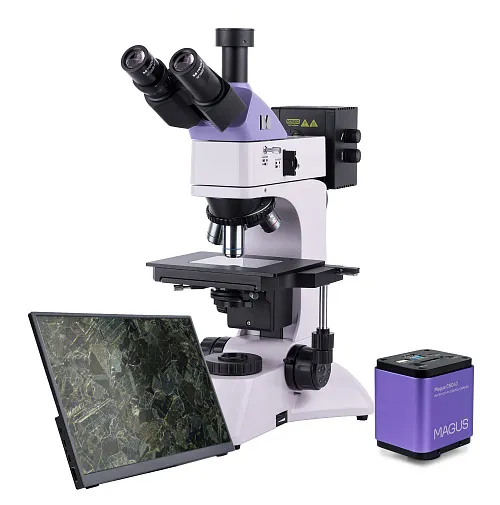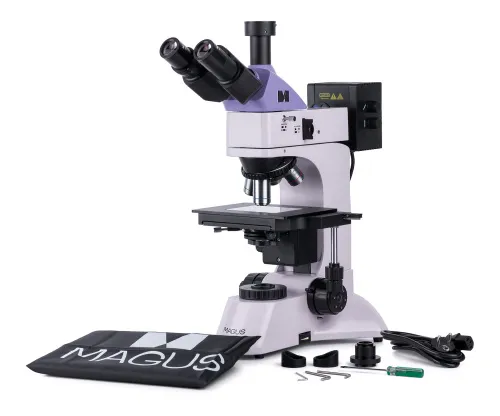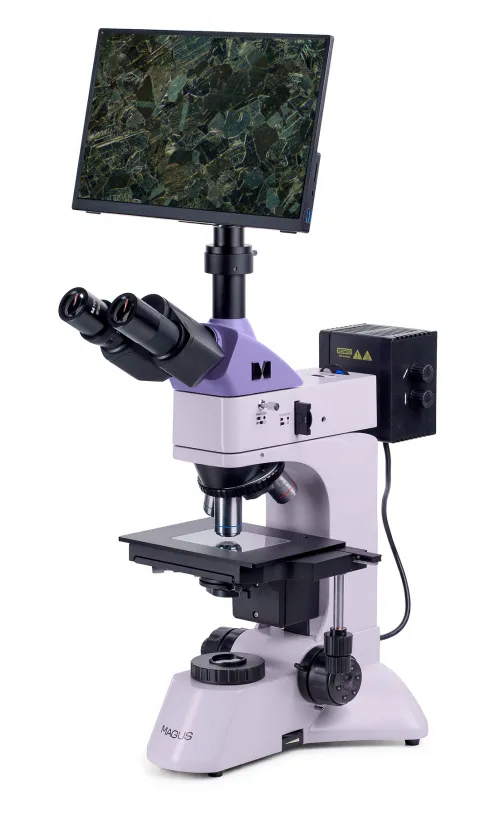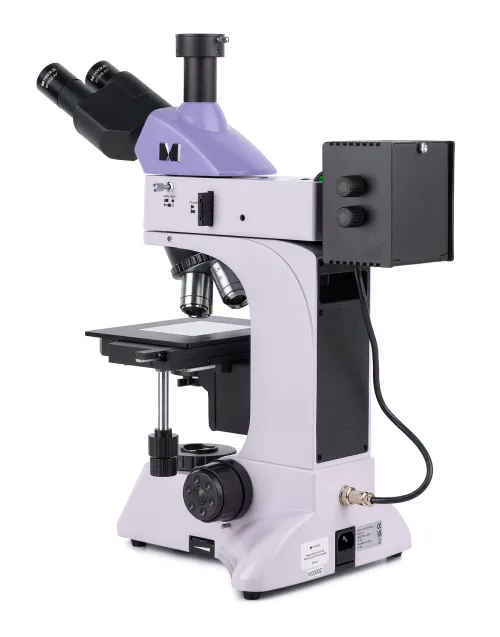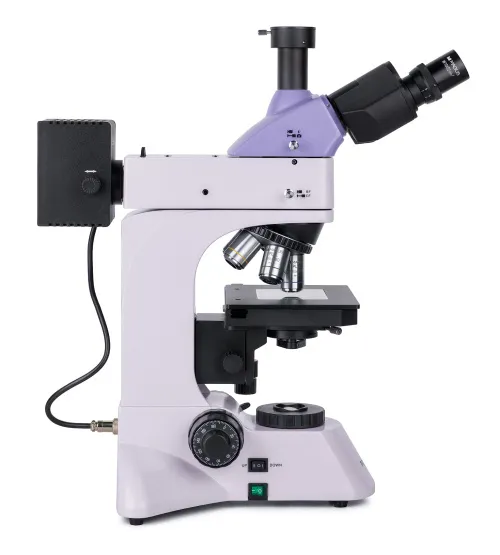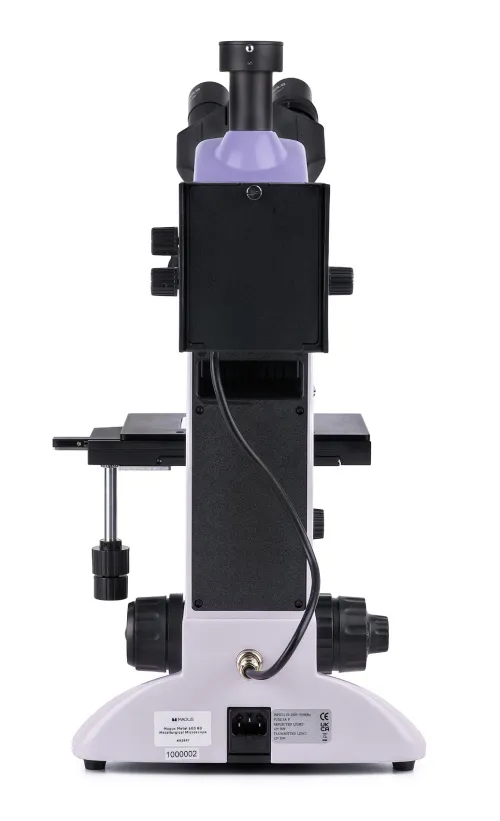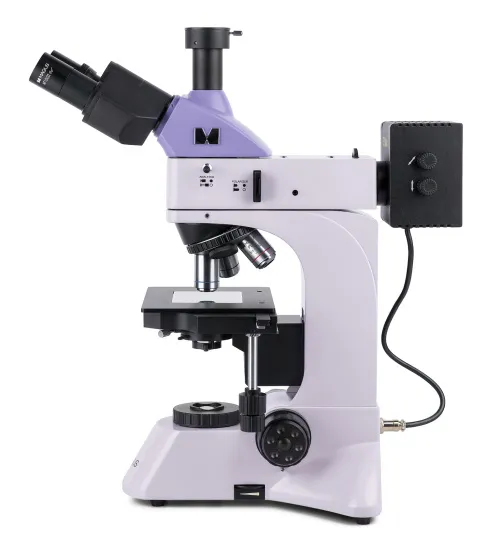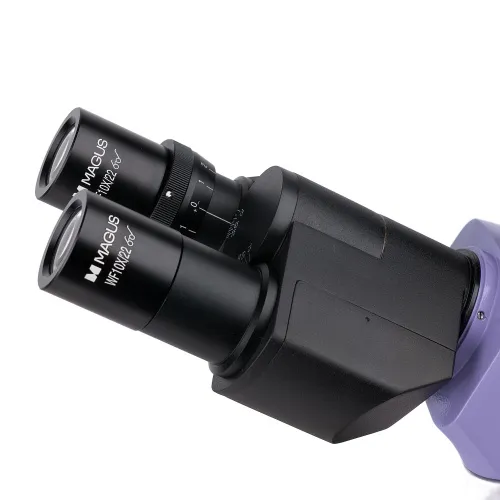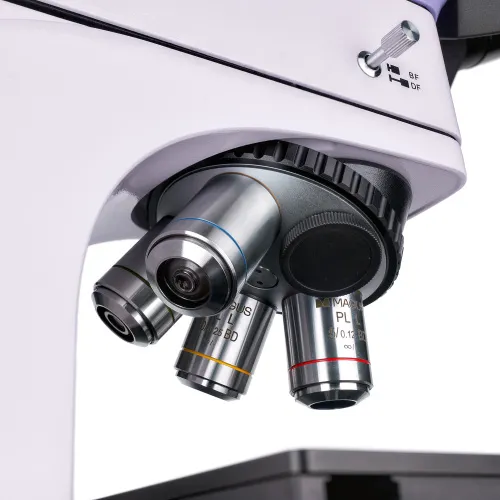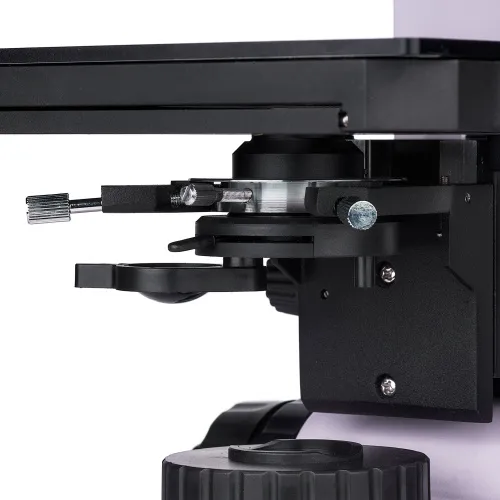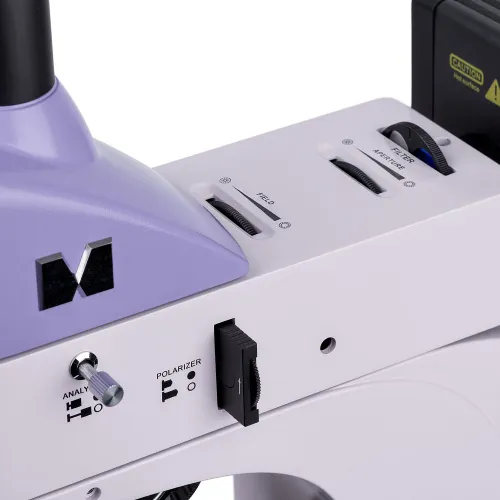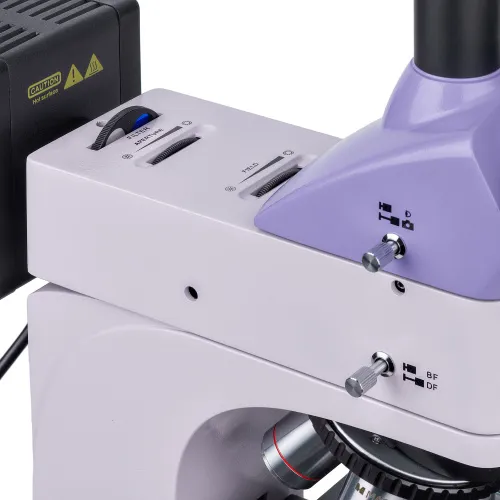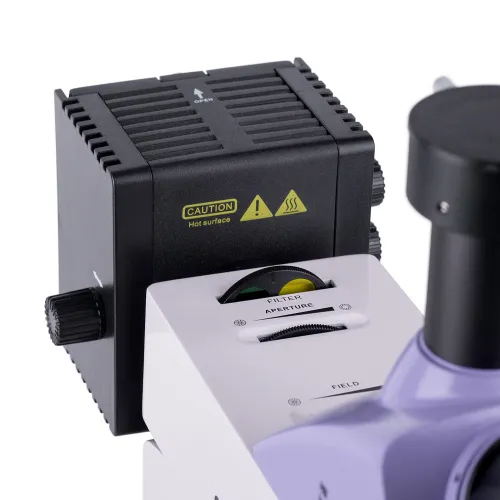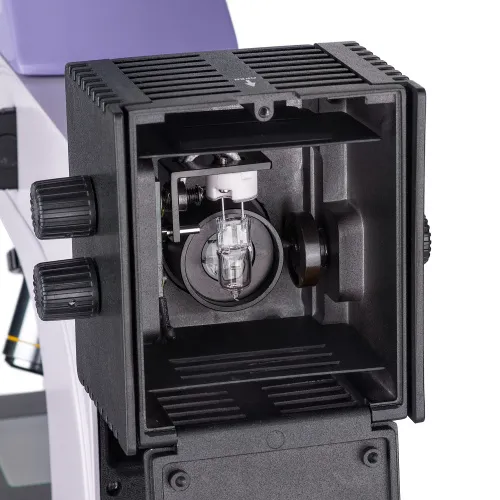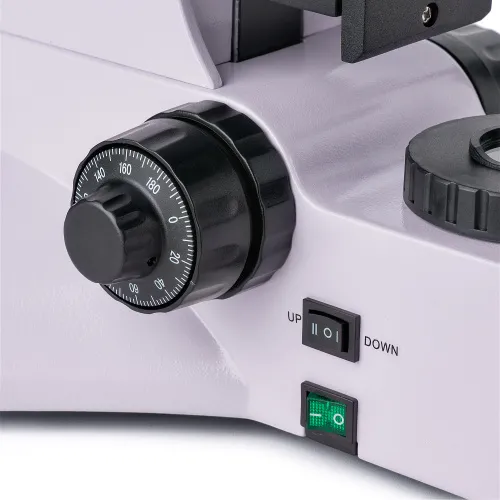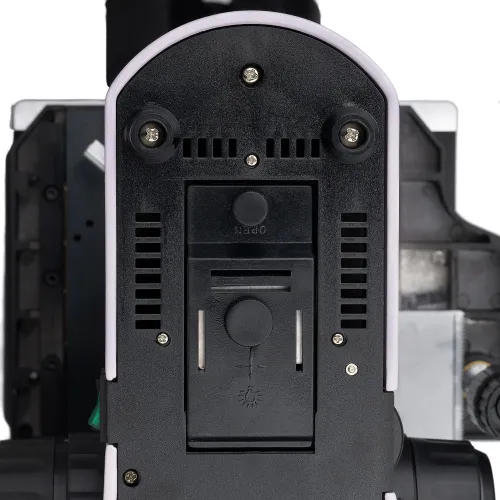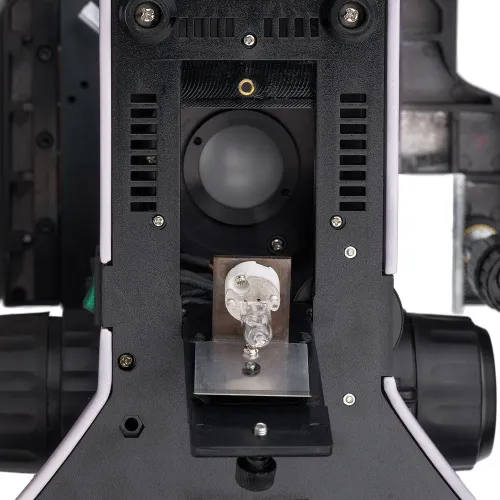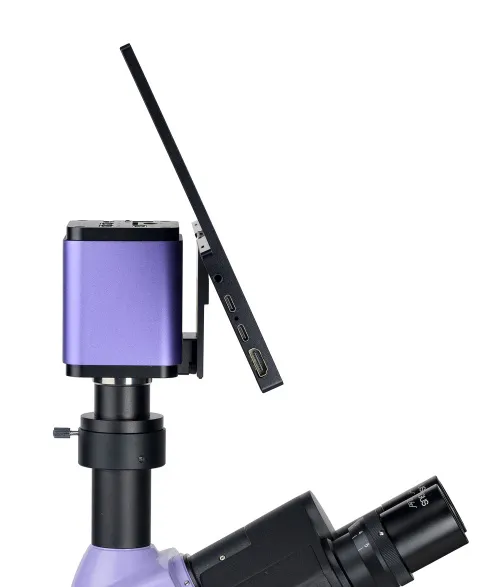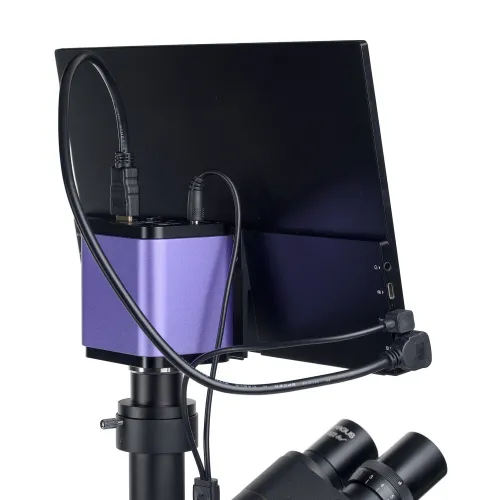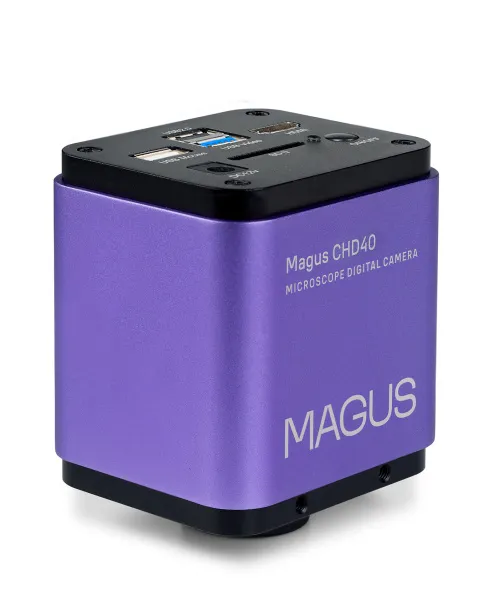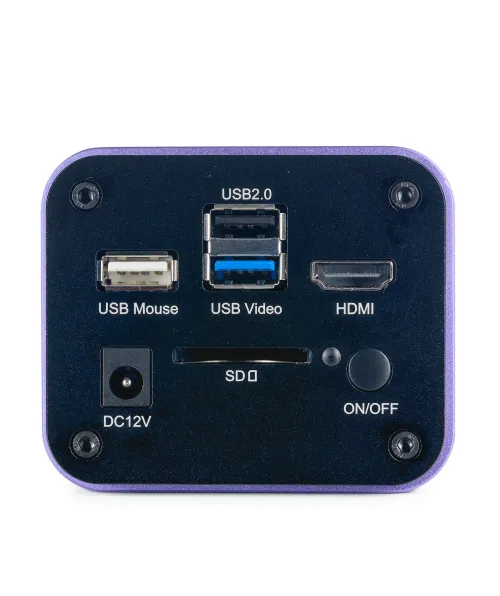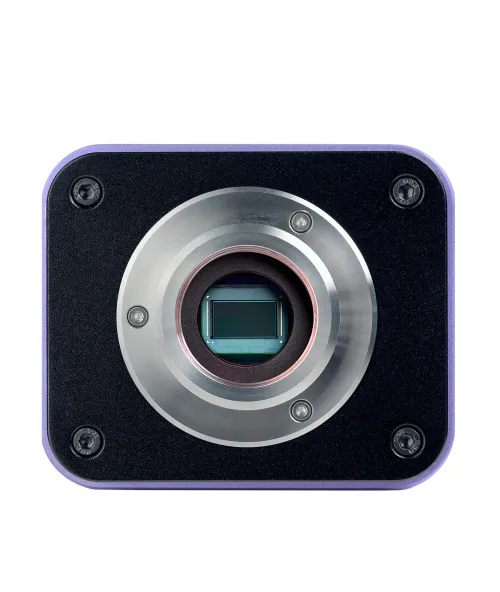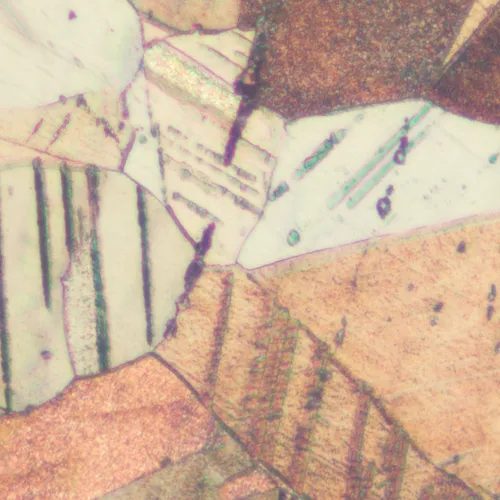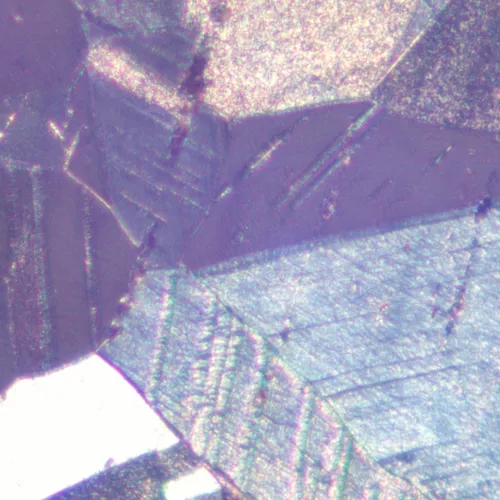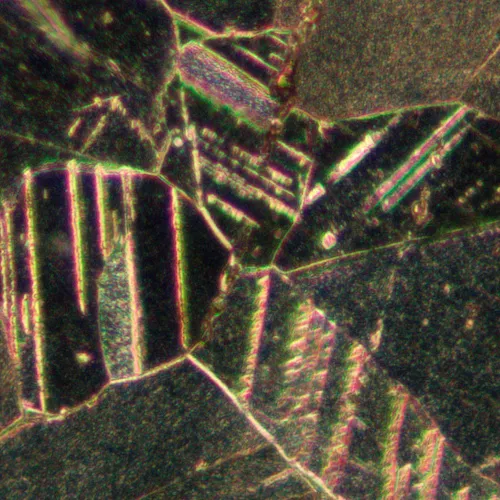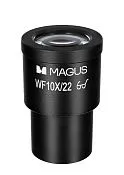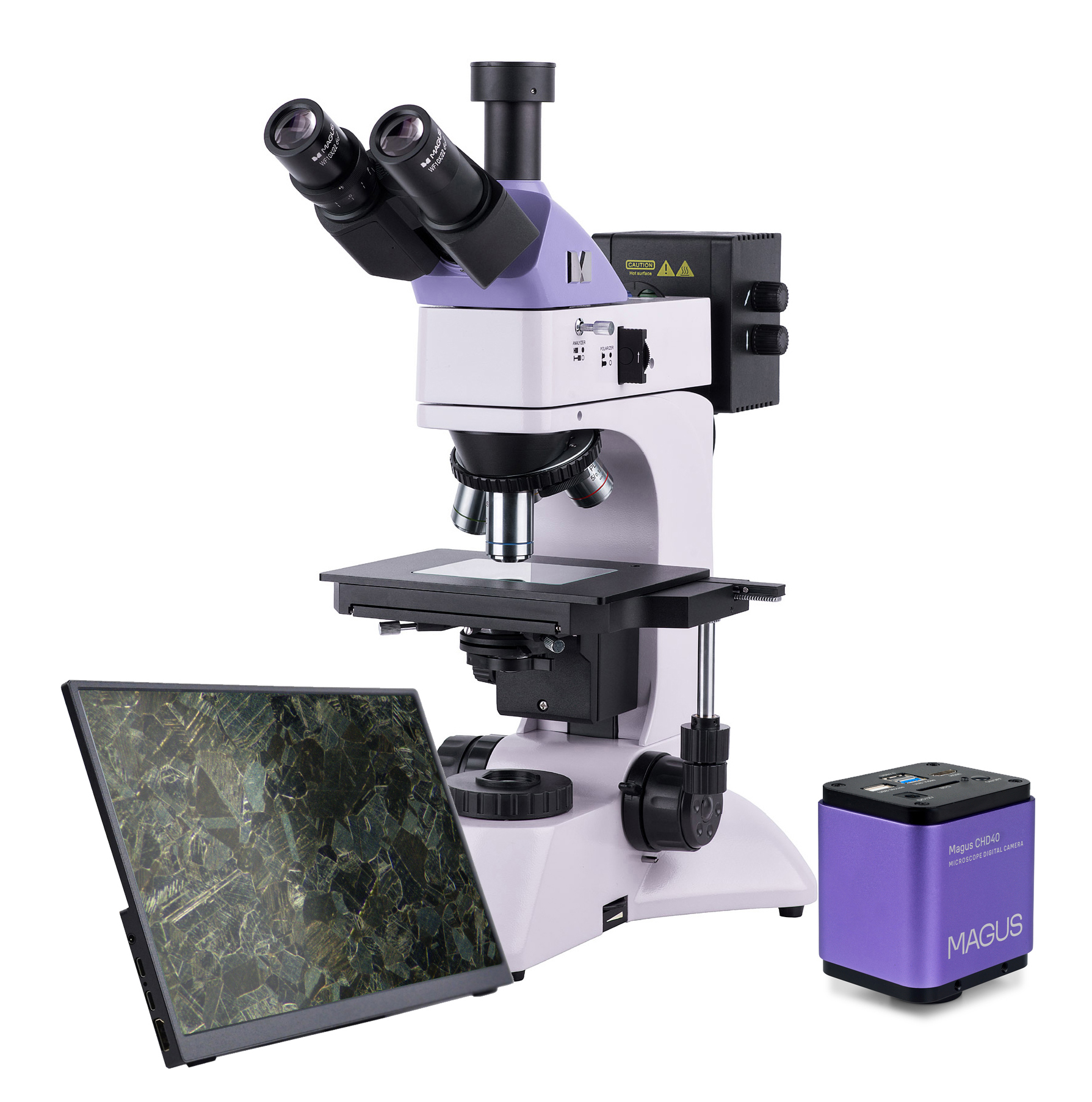MAGUS Metal D600 BD LCD Metallurgical Digital Microscope
With a camera and monitor. Magnification: 50–400x. Trinocular head, plan achromatic objectives for brightfield and darkfield techniques, 30W halogen transmitted light illuminator, 50W halogen reflected light illuminator
| Product ID | 83027 |
| Brand | MAGUS |
| Warranty | 5 years |
| EAN | 5905555018317 |
| Package size (LxWxH) | 35x30x75 cm |
| Shipping Weight | 17.25 kg |
The MAGUS Metal D600 BD LCD Metallurgical Digital Microscope is designed for studying objects in reflected light using brightfield, darkfield, and polarization microscopy techniques. This microscope is used to examine metal and semiconductor samples as well as other flat and polished samples with high reflectivity. In transmitted light, you can study translucent samples like thin films and particles trapped on filters. The microscope can be used in metallurgical and mechanical engineering industries, in engineering and quality control laboratories as well as in technical universities.
Digital camera
MAGUS CHD40 is a digital HDMI camera with three video interfaces and automatic switching between 4K and Full HD depending on the monitor resolution. The camera is equipped with an 8MP sensor and produces realistic images in 4K resolution (3840x2160px) when connected via HDMI or USB3.0. When connected via Wi-Fi, the image quality is Full HD (1920x1080px). The camera uses an HDMI interface to connect to a TV, monitor, or projector directly. In this mode, the camera operates autonomously without a connection to a PC. The HDMI interface provides a high and stable transfer rate from the camera to the external screen. You can connect the camera to a PC via Wi-Fi or USB3.0. Video is recorded at 30fps. The camera combines high FPS and high bandwidth HDMI. Therefore, videos are vivid, with no freezes or gaps between frames. At maximum resolution, the image is well-detailed, moving objects are visible without bugs, and object movement is displayed without delays.
Monitor
The MAGUS MCD40 Monitor is designed to use a visualization system of the MAGUS microscope. It is connected to a camera mounted on the microscope to display real-time images. It supports MAGUS 4K HDMI cameras. The screen diagonal is 13.3 inches. The IPS matrix provides bright images with large viewing angles. If you look at the display at an angle, the color reproduction is not distorted. The display can be placed on a folding stand on a table or shelf or mounted directly to the camera or microscope stand.
Optics
The trinocular head has a trinocular tube in which the digital camera is mounted. The beam splitter directs light to the camera, there are two positions available: 100:0 and 0:100. The light beam goes all the way into either the eyepieces or the trinocular tube. Diopter adjustment ring is on the left eyepiece.
The magnification of the microscope in the basic configuration is 50–400x. Additional objectives and eyepieces will increase the range of magnification. The microscope uses plan achromatic objectives with long working distance for brightfield and darkfield microscopy techniques. There are five slots in the revolving nosepiece for mounting objectives – four objectives are included and one is optional. The revolving nosepiece with objectives is oriented toward the interior – the user can see the objective inserted into the optical path.
Illumination
The illumination uses warm halogen lamps that do not cause eye fatigue even when working for long periods of time. The power of the transmitted light illuminator is 30W and the reflected light illuminator is 50W, which ensures comfortable work using dark-field microscopy.
The reflected light illumination system contains: a darkfield device, polarization device, center-adjustable field and aperture diaphragms for Köhler illumination method, and color filters. The light source can also be centered.
The transmitted light illumination system includes: a condenser with a flip-down lens for low magnification objectives and an aperture and field diaphragm for the Köhler method.
Stage and focusing mechanism
The specimen moves with the stage along two axes. The height of the examined sample should not exceed 20mm. To work with translucent samples, the table has a transparent glass plate.
Focusing is adjusted by coaxial coarse and fine focusing knobs that are located on each side in the lower part of the microscope. This allows the observer to place their hands freely on the table rather than holding them in the air. The coarse focusing mechanism has a lock knob on the right side and tension adjustment on the left.
Accessories
The range of accessories compatible with the MAGUS Metal 600 BD microscope includes: long working distance objectives for brightfield and darkfield, eyepieces, calibration slides, and digital cameras.
Key features of the microscope:
- Observations of opaque flat polished samples up to 20mm in reflected light using brightfield, darkfield, and polarization microscopy techniques
- Observations of translucent samples in transmitted light
- Trinocular tube for mounting a digital camera, and a beam splitter with two positions (100:0 and 0:100)
- Plan achromatic objectives with a long working distance; the BD stands for both brightfield and darkfield
- Transmitted light illuminator – 30W halogen bulb, reflected light illuminator – 50W halogen bulb ensures comfortable work using darkfield microscopy
- Köhler illumination (reflected light) with the option of centering the light source, field and aperture diaphragms; color filters
- Köhler illumination (transmitted light) with centering and height-adjustable Abbe condenser, flip-down condenser lens for low magnification objectives
- Wide range of fully compatible eyepieces and objectives
Key features of the camera:
- The camera operates autonomously without a connection to a PC and via HDMI interface. Can be connected to a PC via Wi-Fi and a USB3.0 interface
- Auto switching between 4K and Full HD depending on monitor resolution
- 30fps for observing moving objects, recording video, and moving the sample without jerkiness or delays
- SONY Exmor/Starvis color CMOS backlit sensor provides low noise level and high light sensitivity even in low-light conditions. You will get clearer, brighter, and more color-saturated images
- Software with photo, video recording, editing, external display functions, linear and angular measurements
The kit includes:
- MAGUS CHD40 Digital Camera (digital camera, HDMI cable (1.5m), USB3.0 cable (1.5m), USB mouse, 32GB SD memory card, USB Wi-Fi adapter (2pcs.), AC power adapter 12V/1A (Euro), installation CD with drivers and software, user manual and warranty card)
- MAGUS MCD40 LCD Monitor
- Base with a power input, transmitted light source and condenser, focusing mechanism, stage, and revolving nosepiece
- Reflected light illuminator with a lamphouse
- Trinocular head
- Infinity plan achromatic objective: PL L5x/0.12 BD WD 9.7mm
- Infinity plan achromatic objective: PL L10x/0.25 BD WD 9.3mm
- Infinity plan achromatic objective: PL L20x/0.40 BD WD 7.2mm
- Infinity plan achromatic objective: PL L40x/0.60 BD WD 3.0mm
- Eyepiece 10x/22mm with long eye relief (2 pcs.)
- Transparent stage plate
- C-mount adapter 1x
- Hex key wrench
- AC power cord
- Reflected light illuminator power cord
- Dust cover
- User manual and warranty card
Available on request:
- 10x/22mm eyepiece with a scale
- 12.5x/14mm eyepiece (2 pcs.)
- 15x/15mm eyepiece (2 pcs.)
- 20x/12mm eyepiece (2 pcs.)
- 25x/9mm eyepiece (2 pcs.)
- Infinity plan achromatic objective: PL L50х/0.70 BD WD 2.5mm
- Infinity plan achromatic objective: PL L60x/0.70 BD WD: 1.9mm
- Infinity plan achromatic objective: PL L80x/0.80 BD WD: 0.8 mm
- Infinity plan achromatic objective: PL L100х/0.85 (dry) BD WD: 0.4mm
- Calibration slide
| Product ID | 83027 |
| Brand | MAGUS |
| Warranty | 5 years |
| EAN | 5905555018317 |
| Package size (LxWxH) | 35x30x75 cm |
| Shipping Weight | 17.25 kg |
| Type | light/optical, metallurgical |
| Microscope head type | trinocular, digital screen/PC monitor |
| Head | Siedentopf |
| Head inclination angle | 30 ° |
| Magnification, x | 50 — 400 |
| Magnification, x (optional) | 50–1000/1250/1500/2000/2500 |
| Eyepiece tube diameter, mm | 30 |
| Eyepieces | 10х/22mm, eye relief: 10mm (*optional: 10x/22mm with scale, 12.5x/14; 15x/15; 20x/12; 25x/9) |
| Objectives | infinity plan achromatic: PL L5x/0.12 BD, PL L10x/0.25 BD, PL L20x/0.40 BD, PL L40x/0.60 BD; parfocal height 45mm (*optional: PL L50x/0.70 BD, PL L60x/0.70 BD, PL L80x/0.80 BD, PL L100x/0.85 BD (dry)) |
| Revolving nosepiece | for 5 objectives |
| Working distance, mm | 9.7 (5x); 9.3 (10x); 7.2 (20x); 3.0 (40x); 2.5 (50x); 1.9 (60x); 0.80 (80x); 0.40 (100x) |
| Interpupillary distance, mm | 48 — 75 |
| Stage, mm | 210x140 |
| Stage moving range, mm | 75/50 |
| Stage features | two-axis mechanical stage, with a glass plate |
| Eyepiece diopter adjustment, diopters | ±5 (on the left tube) |
| Condenser | transmitted light: center-adjustable and height-adjustable Abbe condenser, NA 1.25, adjustable aperture diaphragm and flip-down lens, with locking screws |
| Diaphragm | transmitted and reflected light: built-in aperture and field diaphragms |
| Focus | coaxial, coarse focusing (25mm, with a lock knob and tension adjusting knob) and fine focusing (0.002mm) |
| Illumination | halogen |
| Brightness adjustment | ✓ |
| Power supply | 220±22V, 50Hz, AC network |
| Light filters | green, blue, yellow, matt |
| Operating temperature range, °C | 5...+35 |
| Additional | built-in analyzer and removable polarizer, darkfield device |
| User level | experienced users, professionals |
| Assembly and installation difficulty level | complicated |
| Application | metallurgical |
| Illumination location | dual |
| Research method | bright field, dark field, polarization |
| Pouch/case/bag in set | dust cover |
| Weight, kg | 11 |
| Camera specifications | |
| Sensor | Sony Exmor/Starvis CMOS |
| Color/monochrome | color |
| Megapixels | 8 |
| Maximum resolution, pix | 3840x2160 |
| Sensor size | 1/1.2'' (11.14x6.26mm) |
| Pixel size, μm | 2.9x2.9 |
| Interface connectors | HDMI 1.4, USB 3.0, Wi-Fi |
| Memory card | SD up to 32GB |
| Ability to connect additional equipment | USB mouse, Wi-Fi adapter (USB), flash stick (USB) |
| Light sensitivity | 1028mV with 1/30s |
| Signal/noise ratio | 0.13mV at 1/30s |
| Exposure time | 0.014ms–1000ms |
| Video recording | ✓ |
| Frame rate, fps at resolution | 30@1920x1080 (Wi-Fi), 30@3840x2160 (HDMI), 30@3840x2160 (USB3.0) |
| Place of installation | trinocular tube, eyepiece tube instead of an eyepiece |
| Image format | *.jpg, *.tif |
| Video format | *.h264/*.h265, *.mp4 |
| Spectral range, nm | 380–650 (built-in IR filter) |
| Shutter type | ERS (electronic rolling shutter) |
| Software | HDMI: built-in; USB: MAGUS View |
| System requirements | Windows 8/10/11 (32bit and 64bit), Mac OS X, Linux, up to 2.8GHz Intel Core 2 or higher, minimum 4GB RAM, USB2.0 port, RJ45, 19" or larger display |
| Mount type | C-mount |
| Body | CNC aluminum alloy |
| Camera power supply | DC adapter 12V, 1A |
| Camera operating temperature range, °С | -10...+50 |
| Operating humidity range, % | 30 — 80 |
| Monitor specifications | |
| Type of matrix | IPS |
| Display diagonal, inch | 13.3 |
| Display resolution, px | 3840x2160 (4K) |
| Aspect ratio | 16:9 |
| Brightness, cd/m² | 400 |
| Number of displayed colors | 16.7 m |
| Contrast | 1000:1 |
| Horizontal/vertical viewing angle, ° | 178/178 |
| Size of the visible screen area (WxH), mm | 295x165 |
| Pixel pitch (WxH), mm | 0.154x0.154 |
| Frequency of optical source, Hz | 60 |
| Type of matrix backlight | LED |
| LED backlight lifetime, h | 50000 |
| Interface | HDMI |
| Operating temperature range, °C | -15...+55 |
| Operating humidity range, % | 10 — 90 |
| Power supply | AC 110–220V, DC 5–12V/1A (Type-C) |
| Power consumption, W | 12 (max.) |
and downloads
We have gathered answers to the most frequently asked questions to help you sort things out
Find out why studying eyes under a microscope is entertaining; how insects’ and arachnids’ eyes differ and what the best way is to observe such an interesting specimen
Read this review to learn how to observe human hair, what different hair looks like under a microscope and what magnification is required for observations
Learn what a numerical aperture is and how to choose a suitable objective lens for your microscope here
Learn what a spider looks like under microscope, when the best time is to take photos of it, how to study it properly at magnification and more interesting facts about observing insects and arachnids
This review for beginner explorers of the micro world introduces you to the optical, illuminating and mechanical parts of a microscope and their functions
Short article about Paramecium caudatum - a microorganism that is interesting to observe through any microscope

